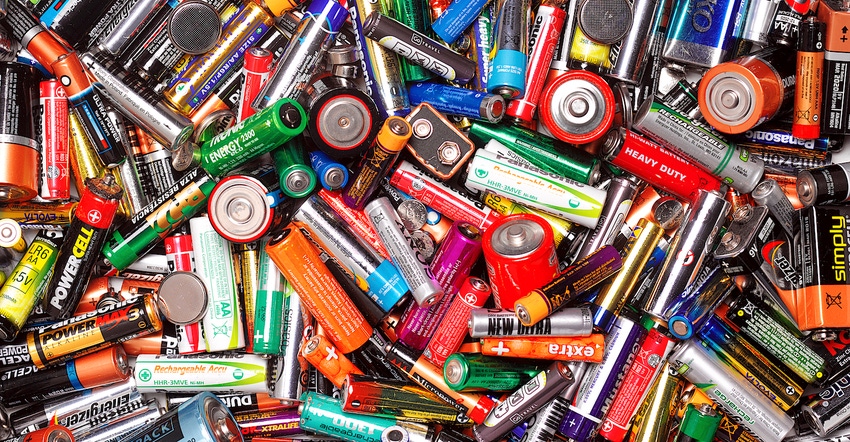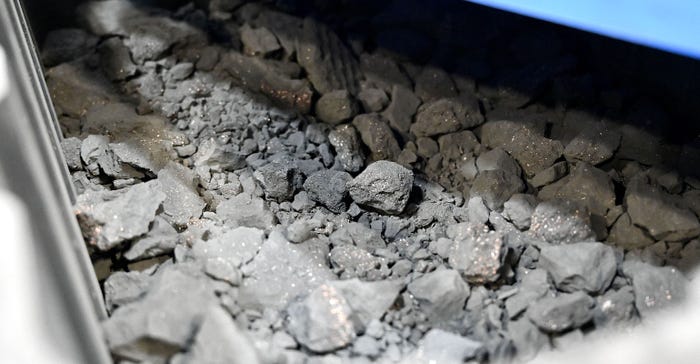Clarios Targets Lithium-Ion EV Battery Recycling
The leader in lead-acid car battery recycling says it can achieve the same results with lithium-ion batteries.

Frustratingly, one obstacle to EV acceptance is the widespread belief that EV batteries are not recyclable, and that people will let the expensive, valuable, toxic materials contained in them be dumped into landfills to contaminate water supplies.
According to a survey commissioned by battery materials company Ascend Elements, 47 percent of Americans think that EV batteries cannot be recycled. The survey further found that 37 percent don’t realize that materials from old batteries can be used to make new batteries.
This contrasts with the reality that conventional lead-acid car batteries are currently the most highly recycled consumer product, according to battery maker Clarios. For lead-acid batteries, 99 percent of the material used in them is recovered and reused to make new batteries, reducing the need for virgin materials.
Bringing lithium-ion battery recycling to a similar state of maturity is the current goal for Clarios, explained the company’s vice president of technology, Craig Rigby. “The government wants to set targets for EV battery recycling rates,” he said. “Their expectation is by middle of next decade you see EV battery recycling approach what we see with lead.”
While EV batteries are the main target, batteries that are used for stationary target will likely hit high recycling rates sooner than vehicle batteries, Rigby predicted. “I think the market will get into the 90s percentage recycling rate faster than anybody is stationary batteries,” he said. “Those are captive. They are savvy operators, they know what they’ve got, they know there’s value. Those are the ones most likely to be recycled at a high rate the soonest.”
The infrastructure that grows in support of recycling those batteries will be available to boost EV battery recycling rates too. “We need an ecosystem to enable that to develop,” he added. Deposits on soft drinks had a decisive effect on the recovery of those bottles and cans and their elimination from the roadside litter stream, Rigby points out. “Putting a deposit on soda cans changed things in Michigan overnight,” he recalled.
An early challenge for would-be recyclers is finding dead EV batteries to recycle. Drivers would be unhappy many EV batteries had already failed, considering that most EVs are pretty new. But the Union of Concerned Scientists notes that more than 60 gigawatt-hours of lithium-ion battery capacity has been deployed in roughly 1 million BEVs in the United States since 2010, which should provide the start of a foundation for recycling. But that number is heavily loaded toward more recent years, with EVs sold in 2019 accounting for more than a quarter of the total battery capacity deployed (16 GWh).
As the volume of batteries ready to be recycled takes time to grow, in the meantime the primary source of materials for recycling will be scrap material from the sprawling gigafactories that are churning out the cells, Rigby said.
There has never been any question of the technical viability of lithium-ion recycling, said Rigby. The issue has been economics, as the supply of batteries and the facilities needed to process them needed to develop. “Five years ago, I’d have said yes, you can do it, but not economically. Now, yes you can do it and you can build a business.”
That’s what Clarios is doing, and doing built on its experience recycling lead-acid batteries. The background in the circular lead-acid battery industry is important, even though the materials involved are different, he said.
“We’re one of the few companies in the battery space that thinks with and operates with a circular economy,” Rigby observed. “We are used to keeping hold of those materials all the way through and knowing what those materials will be when they come back to a manufacturing plant.”
One key is the company’s relationships with recyclers who gather the dead batteries for reprocessing. “We have what we believe are the best recyclers in our network,” he said. “I think the same will be true in lithium.”
This is important, because Clarios and its network of recyclers already know how to safely and legally handle batteries and their components. “Handling that material in transportation or in storage as you prepare to recycle them is a reality,” Rigby said. “You do batch processing, so there is a need to store these [between batches]. Storing hazardous material is not a trivial thing. The subset of companies that know how to do that is small.”
Even getting the dead batteries to the processing center isn’t trivial. “They are hazardous material,” he said. “The rules [for transporting EV batteries] are not fully clarified. There are a lot of contradictions in the rules and how they are being enforced.”
These are some of the challenges would-be lithium-ion EV battery recyclers face. Another will be to optimize their material-gathering network. “Different parts of these processes work at different scales,” Rigby explained.
“You want to do that at scale, so you are going to centralize [processing plants] as large facilities, he said. “But you have to get the materials there.” That means breaking down the dead batteries into their constituent materials before transporting those materials, he said. “At some point you are processing them into materials that are much easier to transport.

That’s most likely the black mass step,” he said, referring not to the 2015 Johnny Depp mob film, but to the material produced when lithium-ion batteries are broken down. The presumed solution is to build a hub-and-spoke collection network, he said. “On the spoke is where you do the black mass. But what is the right size of that processing? How many tons a year? How close to the battery source do you want that versus doing a little transportation? What’s the sweet spot? That’s unknown.”
All of the participants in the EV battery recycling industry will have to hash this out for themselves, but Clarios’s experience with its lead-acid recycling network will surely provide the company a head start.
About the Author(s)
You May Also Like





